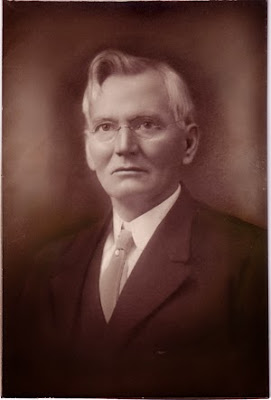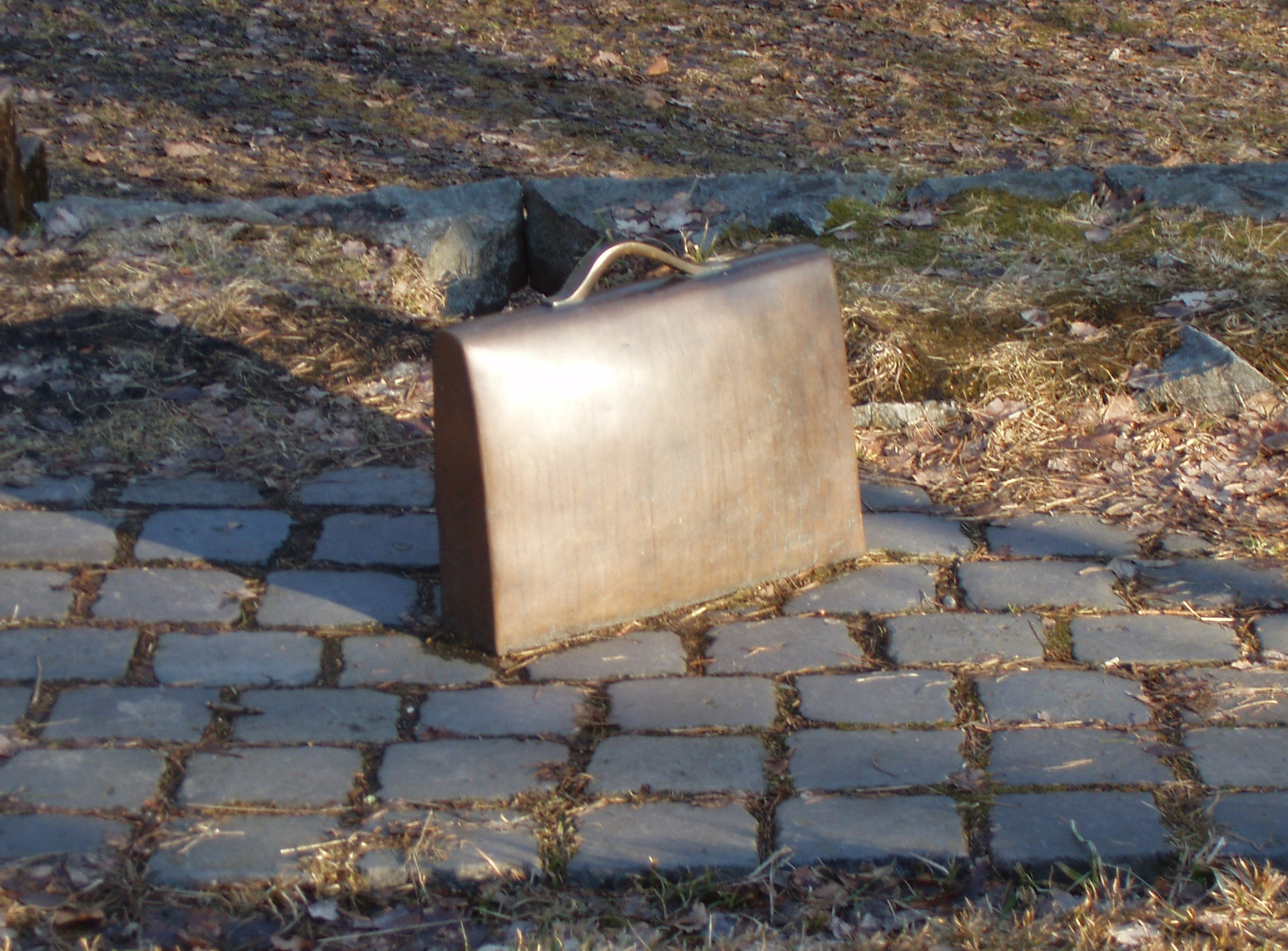 |
Gordon Institute, 1887 Catalog
source: Gordon State College web site |
Sometimes timing is everything. Right after I wrote about
the unfortunate events in the life of my 3rd Great Uncle, Samuel G Slade, I had the chance to learn more about things following his death. Ancestry.com had just released thousands of will and probate records on its website, so I had to see what I could find there. The same records had already been available through FamilySearch.org, but now they were indexed on Ancestry.com.
Soon I found myself using "a second pair of eyes" by also browsing through the same collection of records on FamilySearch.org, readable page by page but without any index. This allowed me to find some additional information that did not show in Ancestry's index of the records. I'm putting all the information together chronologically to show what happened in the Slade family in the years following Samuel G's death.
Samuel G Slade had died on 28 February 1880. By 2 March 1880, six men from Pike County applied to the court for letters to administer his estate.
(1) The application indicated that Samuel G had died intestate, and the gentleman agreed to relinquish their letters of administration should a will be found prior to the settling of his estate. Later through FamilySearch I found that the Ordinary of Pike county had appointed Thomas Barrett from this group of six gentlemen as the temporary administrator of the estate until the official executor could be determined.
(2) This was probably the same Thomas J Barrett who was married to Minerva Ann Slade, one of Samuel G Slade's sisters.
On 5 April 1880, one month later, James W Means also applied for letters of administration for Samuel G's estate.(
2) Browsing through the pages, I could not find that the original group of administrators had been dismissed, but all future records showed only James W Means as the executor of the estate. Incidentally, this same James W Means was later the ordinary of Pike County so I had lots of opportunities to see his name on probate documents.
Sometime that same day, 5 April 1880, James W Means applied for legal guardianship of fourteen-year-old Ella Slade.
(3) It was almost four years later that James W Means applied for the guardianship of her siblings J C, John Edward, and Annie.
(3) All the children were listed as being the wards of James W Means in the 1880 census, but for some unknown reason, there was not no legal document awarding guardianship for the other three children until 1884.
As required by law, James W Means had to file annual reports of his expenses in the settling of Samuel G Slade's estate.
(4) The annual report for 1880-1881 alone covered 16 pages. It provided details about the physical care of the children, the management of the Slade farm, and insight into life in the early 1880s. His report made for some interesting reading.
 |
| Return on behalf of children of Samuel G Slade filed 1 Apr 1881 |
 |
| School supplies and personal items for Edward Slade, 1885. |
Means apparently was paid room and board for all four children. Records also show that he sent spending money to Ella when she was away at school. Another section of the report listed expense vouchers for additional purchases, things like a boy's suit, four collars, and two collar buttons; payments to a dealer in millinery and fine goods; the purchase of fabric, thread, and needles; new shoes; and a long list of school supplies - paper, ink, tablets, and books. Other vouchers were presented for dental work and medicine for the children.
From the vouchers, I also learned that the four children attended school. The oldest child Ella attended Wesleyan Female Institute in Staunton, Virginia, and her brothers and younger sister were students at Gordon Institute near the Means' home in Barnesville, Georgia.
Management of the Slade farm and mill seemed to be an ongoing operation for Mr. Means. Vouchers showed purchasing seeds and fertilizer, agreements to sell cotton, buying tools and necessary farm equipment as well as paying those who worked on the farm and at the mill. And then there were the notes for money borrowed by Samuel G Slade prior to his death, notes which James W Means paid from the farm income. A touching note was to see voucher #50, the payment for fixing the graves of Mr. and Mrs. Slade and a child.
Appraisers submitted their evaluation of Samuel G Slade's estate in May of 1880, giving the total estate a value of $12,347.81.(
5) A year later, in May of 1881 the appraisers awarded $1000 from the estate for a year's support of the children and authorized the use of a number of pieces of furniture by the Slade children.
(5)
The Slade children continued under the guardianship of James W Means until each was of legal age. As guardian, he submitted an annual report to the Pike County Ordinary for each child as well as a report covering expenses related to the farm and mill. It struck me as interesting that each of the four Slade children was already married at the time his or her legal guardianship was dissolved with Mr. Means. Documents in which the guardianship was dismissed seemed to match the times when J C, Edward, and sister Annie each turned 21.
(6) For some unknown reason, his guardianship of Ella was not concluded until she turned 25. By the time the guardianships had been dismissed, all four children were adults, with their own families and their own lives.
Lessons Learned (and relearned): There is no substitute for looking at original documents or their readable copies. It is one thing to know that James W Means was the children's guardian and the executor of Samuel G Slade's estate. It is quite another thing to see pages that show the extent to which James W Means was involved in the lives of the Slade children or on their behalf for so many years.
Taking the time during this research to become more familiar with the Ancestry indexing and with the variety of records available through FamilySearch will prove useful whenever I use the same records to learn more about other relatives. I gained some skill in using the various indices within a volume and then skimming over documents to find the phrase "administer the goods, chattel, and credit of -------- -------- late of this county deceased" to locate the probate records for a specific individual. I also learned to look at additional pages in the book because sometimes notes concerning one estate were written on the back of the documents for another person.
Now I have a list of other names to search in the Pike County, Georgia records. Then a list for Jones County followed by a list for Monroe County, and that's just for researching my Slade ancestors. And then ...
(1) Georgia, Wills and Probate Records, 1742-1992. Pike County Administrators Bonds 1829-1962; accessed through www.ancestry.com.
(2) Georgia Probate Records, 1742-1990. Pike County Administrators Bonds 1829-1897; accessed through www.familysearch.org
(3) Georgia, Wills and Probate Records, 1742-1992. Pike County Guardians Bonds 1829-1955; accessed through www.ancestry.com.
(4) Georgia Probate Records, 1742-1990. Pike County Returns 1878-1882 vol P; accessed through www.familysearch.org.
(5) Georgia Probate Records, 1742-1990. Pike County Inventories and Returns 1861-1883 vol BA; accessed through www.familysearch.org.
(6) Georgia Probate Records, 1742-1990. Pike County Letters of Dismission, 1881-1962; accessed through www.familysearch.org.















